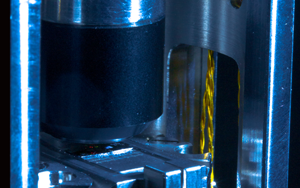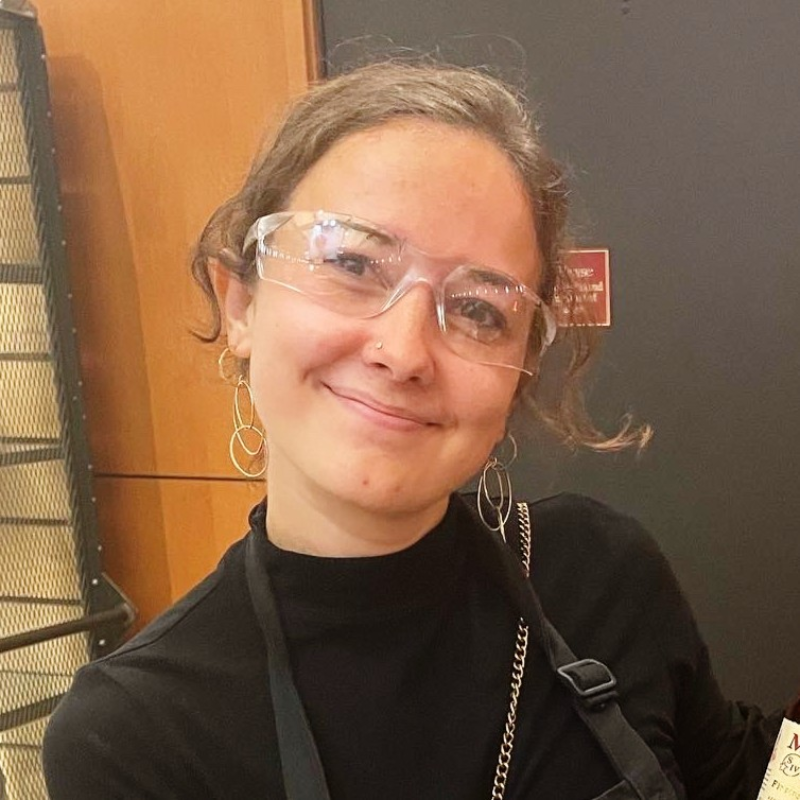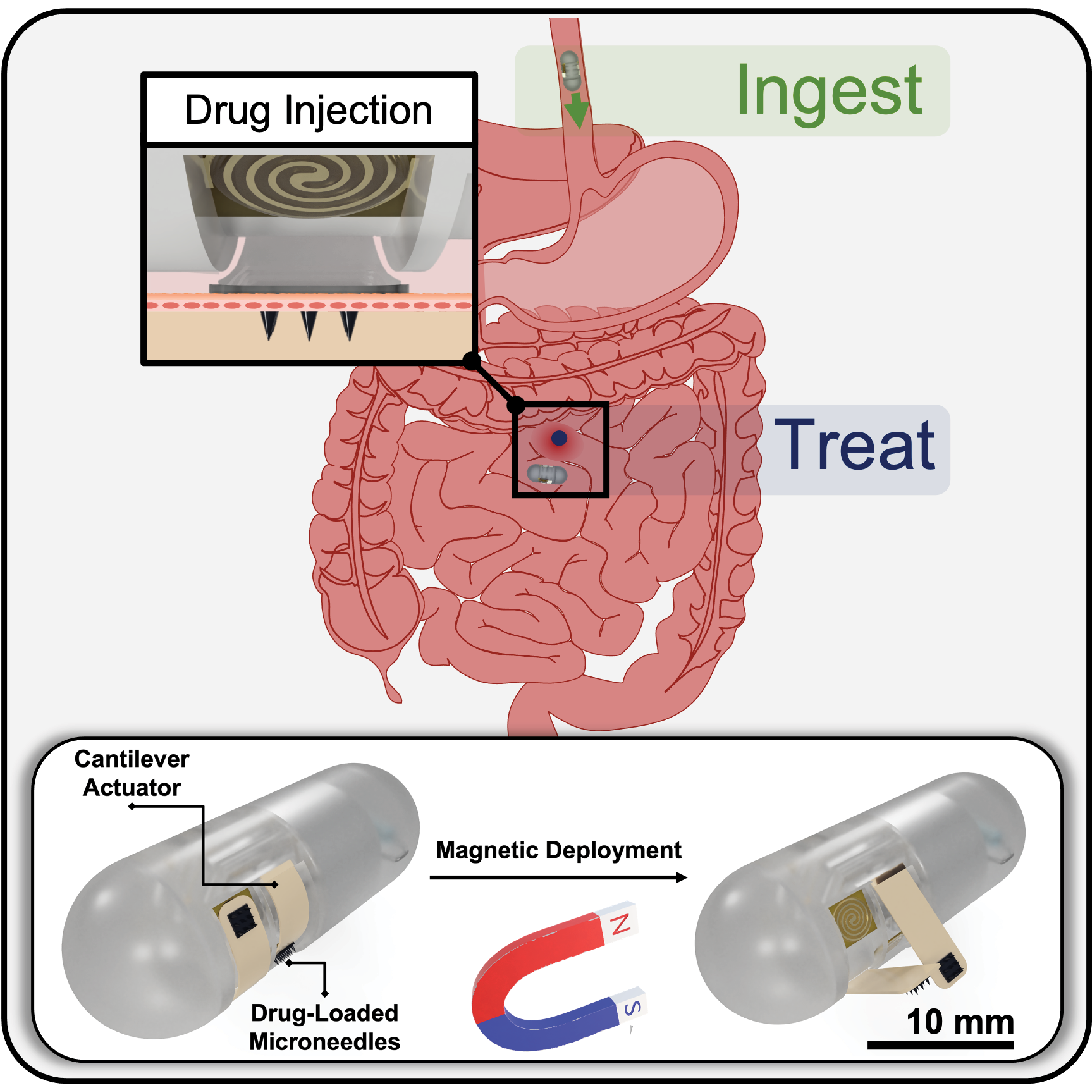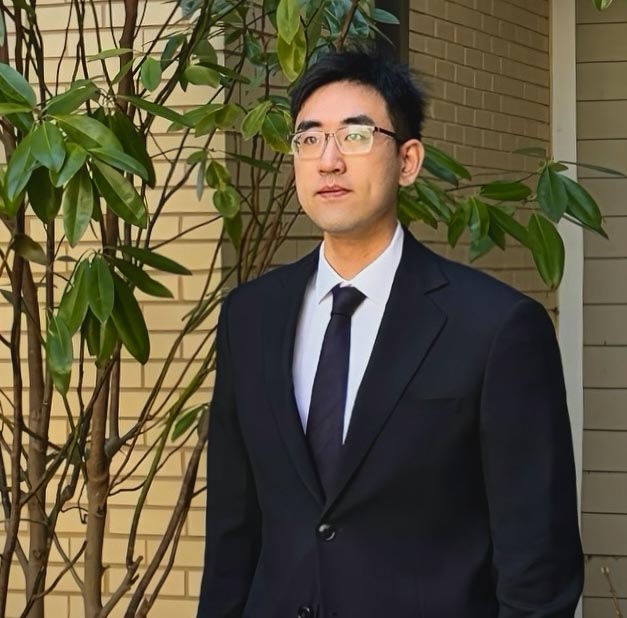News Story
Quantum Dot Commands Light

If you could peek at the inner workings of a computer processor you would see billions of transistors switching back and forth between two states. In optical communications, information from the switches can be encoded onto light, which then travels long distances through glass fiber. Researchers at the Joint Quantum Institute and the Department of Electrical and Computer Engineering are working to harness the quantum nature of light and semiconductors to expand the capabilities of computers in remarkable ways.
All computers, even the future quantum versions, use logic operations or “gates,” which are the fundamental building blocks of computational processes. JQI scientists, led by Professor Edo Waks, have performed an ultrafast logic gate on a photon, using a semiconductor quantum dot. This research is described in the March 31 Advance Online Publication of Nature Photonics.
Photons are a proven transit system for information. In quantum devices, they are the ideal information carriers that relay messages between quantum bits (qubits) such as neutral atoms, ion traps, superconducting circuits, nitrogen vacancy centers, and of course the device used here: quantum dots. A quantum dot (QD) is a semiconductor structure that acts like an atom. This means it has allowed energy levels that can be populated and even shifted around using lasers and magnetic fields. Quantum dots are an attractive platform for quantum processing because they live inside a semiconductor material, thus the technology for integration with modern electronics already exists.
The Waks team has implemented a conditional logic gate called a Controlled-NOT (CNOT). Here’s how a generic CNOT gate works: if a control qubit is in what we will call state 1, then the gate flips the state of a second qubit. If the control qubit is in state 0, nothing happens.
Waks explains the importance of this gate, “Although this logic operation sounds simple, the CNOT gate has the important property that it is universal, which means that all computational algorithms can be performed using only this simple operation. This powerful gate can thus be seen as important step towards implementing any quantum information protocol.”
In this experiment, a quantum dot plays the role of the control qubit. The second qubit is a photon that has two polarization states. Polarization can be thought of as an orientation of the traveling light waves. For instance, polarized sunglasses can shield your eyes from light having certain orientations. Here, photons can be oriented horizontally or vertically with respect to a defined direction. Just like energy levels for a quantum dot constitute a qubit, the two available polarizations make up a photonic qubit.
Light is injected into a photonic crystal cavity (see sidebar) containing a quantum dot. Quantum dots have been trapped in photonic crystals before, but the difference here is an added large external magnetic field. The magnetic field shifts around the energy levels of the quantum dot enabling it to simultaneously act as both a stable qubit and a highly efficient photon absorber. Due to the unique energy level structure of the system, changing the qubit state of the quantum dot can render it completely invisible to the light.
This property makes the CNOT gate possible (see figure). Light trapped in a cavity that does not see a QD (QD in qubit state 1) will eventually leak out, with its polarization flipped. However, if the quantum dot is in qubit state 0, the light is strongly modified such that incoming and outgoing polarizations actually remain the same. In this case the photonic qubit is not flipped.
A sensitive camera collects a fraction of the light that leaks back out of the cavity after its polarization is analyzed using special optics. Thus, the team can see if a photon’s polarization was flipped by the QD. The state of the QD qubit is not random: the team controls it. Another key feature of this protocol is that the photons are from an external laser and are not intrinsically connected to the QD through absorption/emission processes.
“Using an external photon source has an advantage that the quantum dot state is not destroyed during the process. Currently, we use a strongly attenuated laser as the photon source, but eventually this can be replaced with true single photon sources,” says lead author Dr. Hyochul Kim.
This quantum dot-photon gate happens in a flash--picosecond or 1/ trillionth of a second. Ultrafast gates are important when increasing the number of qubits and operations so that a calculation completes before the system’s quantum behavior is lost. (This is called decoherence--scientists can shield the qubit from the disruptive environment but every so often something sneaks in and destroys the quantum states.)
The team’s proof-of-principle gate demonstration paves the way for the next generation of devices that will improve light collection and QD qubit coherence times. “To improve coherence time, we need to trap the electron or hole in the quantum dot and use their spin as a qubit. This is more challenging, and we are currently working on this,” Kim says.
Additionally, they will use truly single photons as the light source. “Quantum dots are also excellent single photon sources. We consider such a system where single photons are periodically emitted from the neighbor quantum dot, which are then connected to logic devices on the same semiconductor chip,” adds Kim.
Published March 29, 2013









